In his sixth consecutive season as head coach of Club Deportes Cobresal, the Chilean Gustavo Huerta is doing an outstanding job with his tactics in this season’s league. Currently, Cobresal stands as the first team in the league table with 42 points in 21 games, given by their 12 wins, six draws and only three defeats.
According to Transfermarkt, the team in question is currently placed at the 13th spot concerning their squad value. Yet, despite this low ranking, the team’s recent performances have been somewhat surprising, considering their fans’ expectations. Such a feat isn’t widespread in some European leagues such as the Premier League, Bundesliga and La Liga, where the range of the league winners is normally too short.
With just nine games to finish, Cobresal are in a great position to repeat the achievement of winning the Chilean league for the second time in their history.
They have the best attack with 40 goals and the second-best defence with 19 goals suffered, which seems to result from the long-term work and team designed by Gustavo Huerta.
In this tactical analysis in the form of a scout report, we’ll try to understand what type of football Cobresal play, as the main reasons for this season’s success.
Team’s in-possession behaviour

As we can see, Cobresal’s positioning splits between a 4-2-3-1 and a 4-4-2 due to the different phases of the game they are into. When Chile has the ball, they play in a 4-2-3-1; when they defend, they switch to a 4-4-2.
In the course of our analysis, we found out that, generally, they are a team that like to build up from the back with the centre-backs, full-backs and the two midfielders low on the pitch, yet they aren’t a very risky team in such a phase of the game.
That said, the direct game is a prevalent and recurrent option for Cobresal in this specific phase of their offensive process. Cecílio Waterman, the striker, is normally the primary reference to such an offensive approach, not only for his physical stature but also his ability to maintain the ball with his back turned to the defenders.
However, this type of formation isn’t quite symmetrical, especially when discussing the midfielders. The captain, Alejandro Camargo, generally is the more backtracked element, while the other midfielder plays in a more intermediary zone of the pitch. Yet during the build-up, both midfielders are down in the same line to support their team’s build-up.
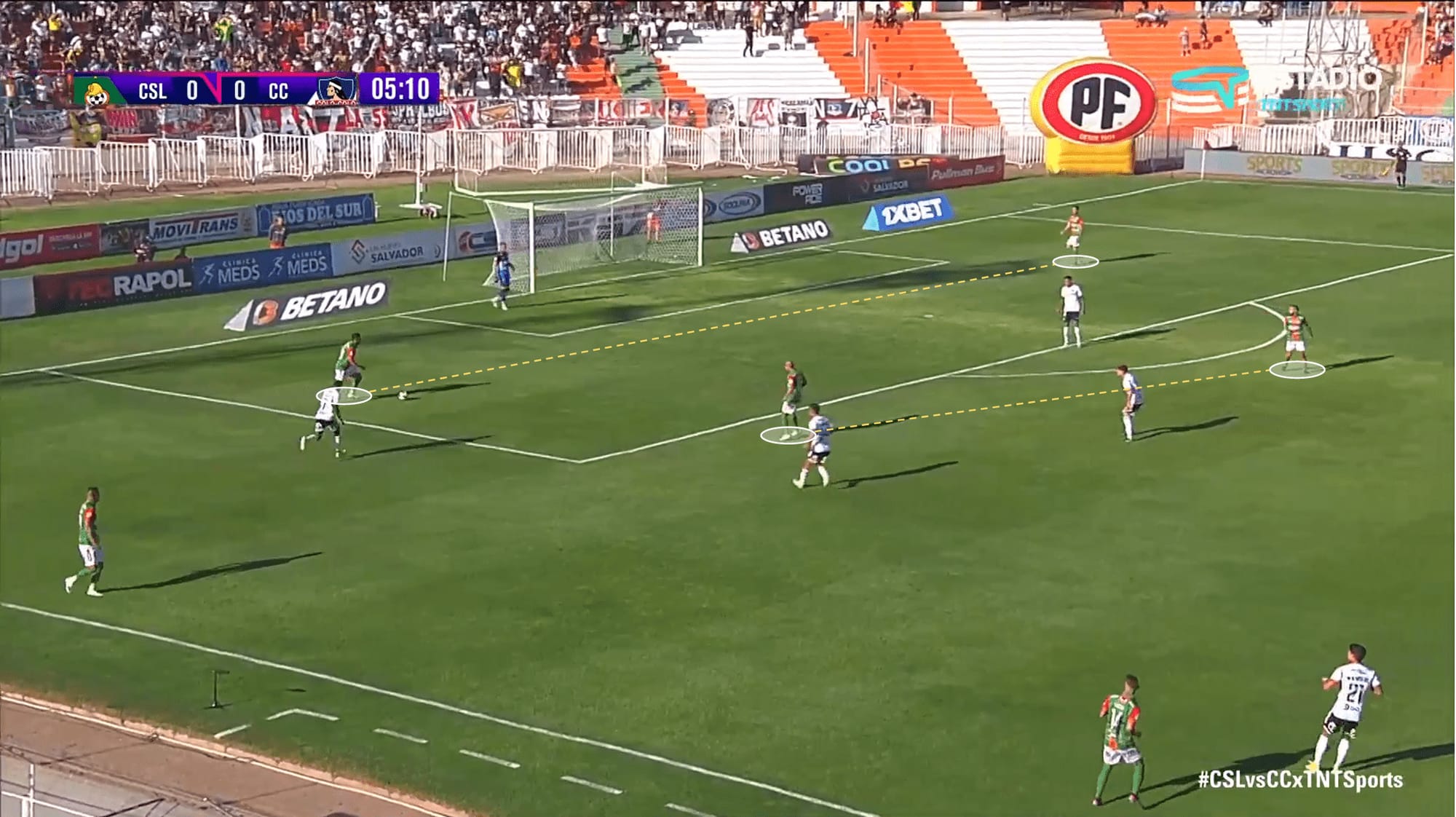
Another fascinating combination between some of Cobresal’s players is between the offensive midfielder and the centre forward, normally played by Leonardo Valencia and Cecílio Waterman, respectively. As we know, most of the centre-backs like to individually mark the striker because he can be dangerous while a connecting link.
That said, Gustavo Huerta seems to have created some alternatives for Waterman’s positioning, such as descending on the pitch. This kind of mobility normally creates two types of possible decisions from the centre-back. We continue to mark the striker leaving ample space in his back, or he stays, and the striker takes advantage of it by staying open.

One of this Chilean side’s weapons is their transitions, especially the counterattacks where Huerta seems to align some tactical details with his squad’s characteristics. Some of the attackers, especially the quick ones, seem to be instructed to be positioned deep, even if the team is under a dangerous attack in their own box.
Huerta appears to follow this risky approach, where defending with less than one player could benefit the team in a future counterattack. This can help them because if the link is successfully done, the attacker is in numeric equality with the opposition’s last man.
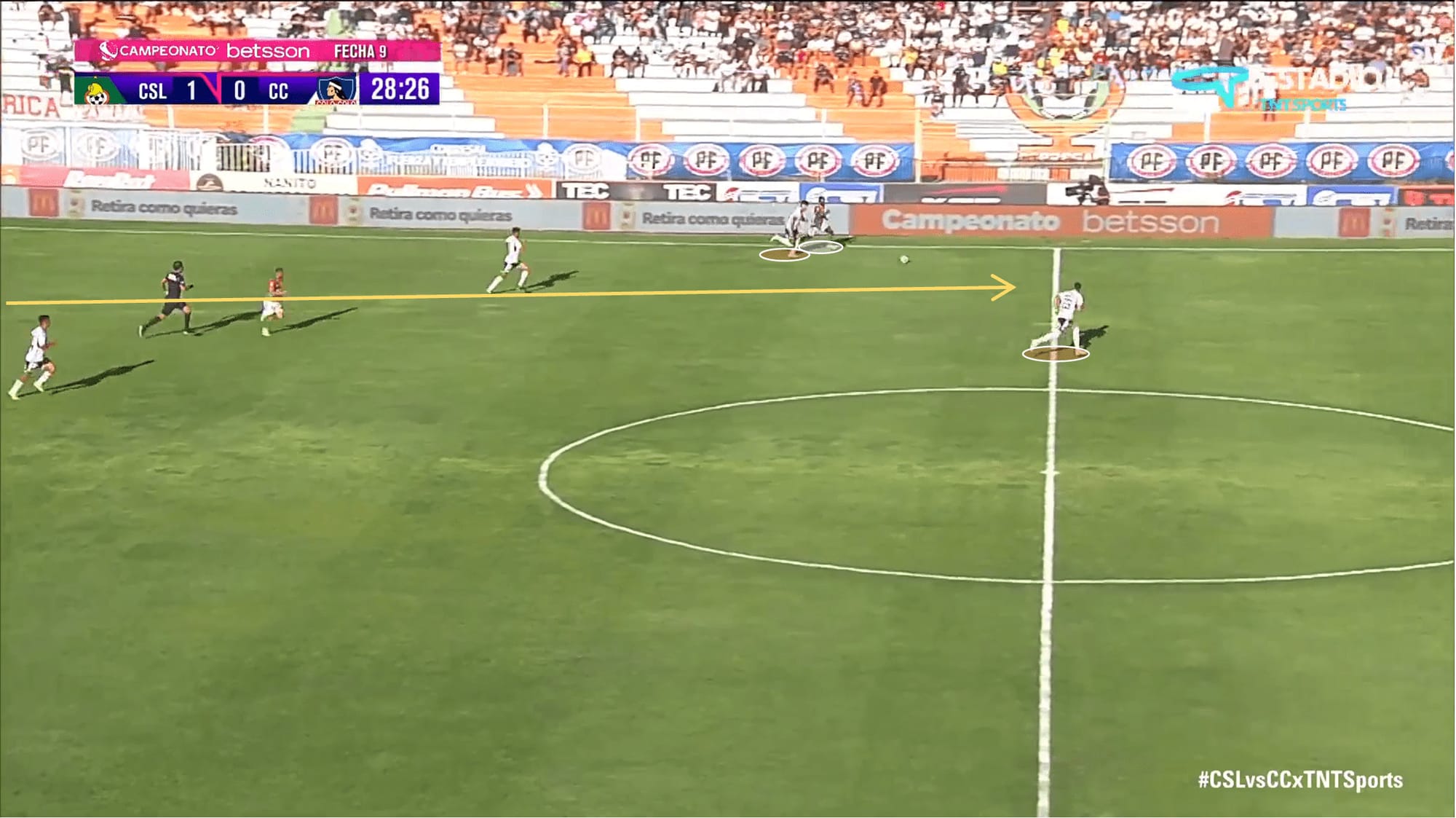
According to Wyscout, not only do Cobresal make more counterattacks per game than their opponents (3.4 counterattacks against 1.88), but they are also more effective while conducting them; in other words, they end them with a shot more often than their opposition (1.28 against 0.76).
However, this doesn’t mean that this Chilean side is a team that constantly seeks this type of action; on the contrary, the intervenients seem quite mature and tactically developed to understand if it’s beneficial to progress with the counterattack or not.
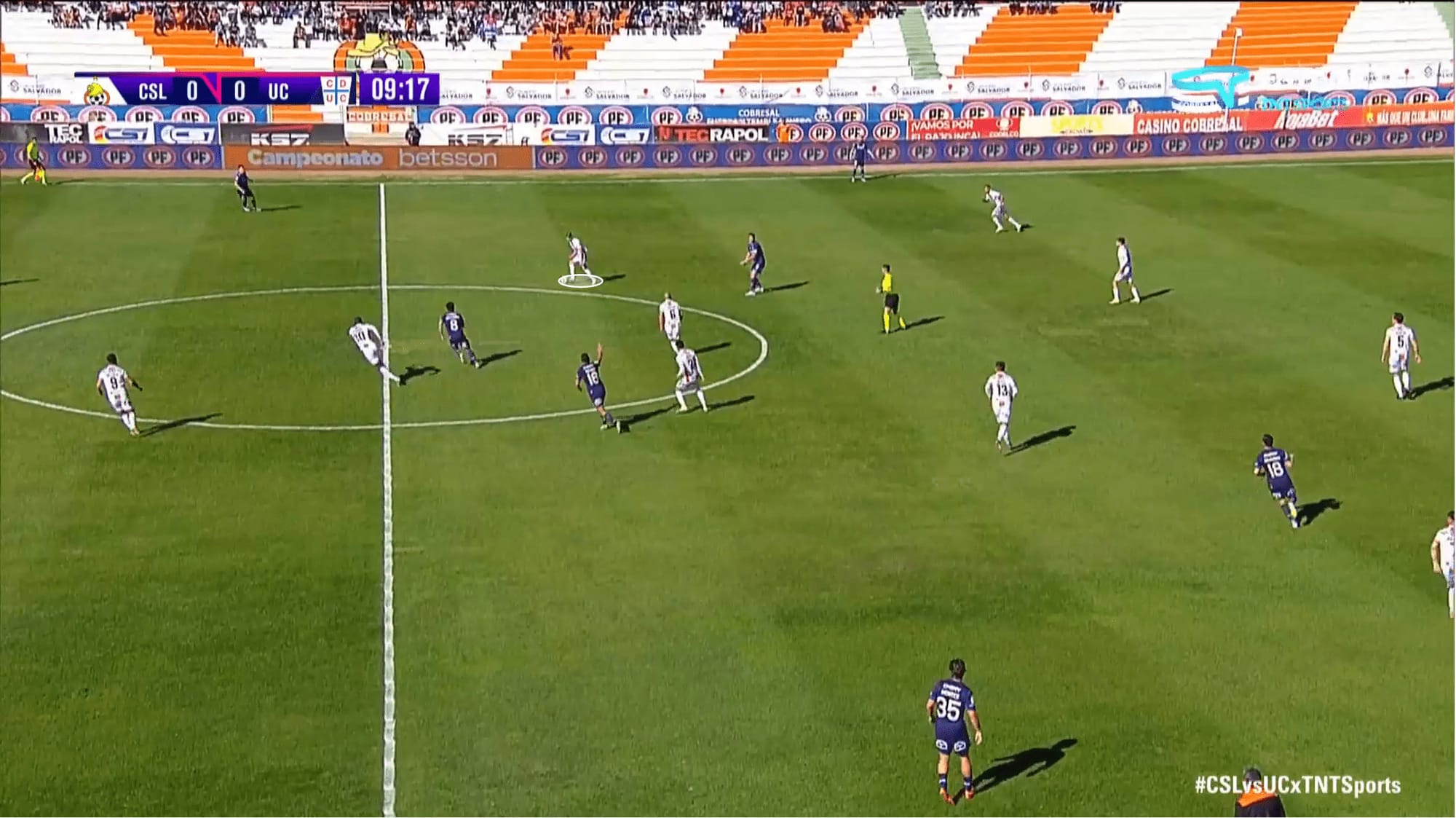
This tactical feature differentiates a transition team from an effective team who knows how to play both in organisation and in counterattack.
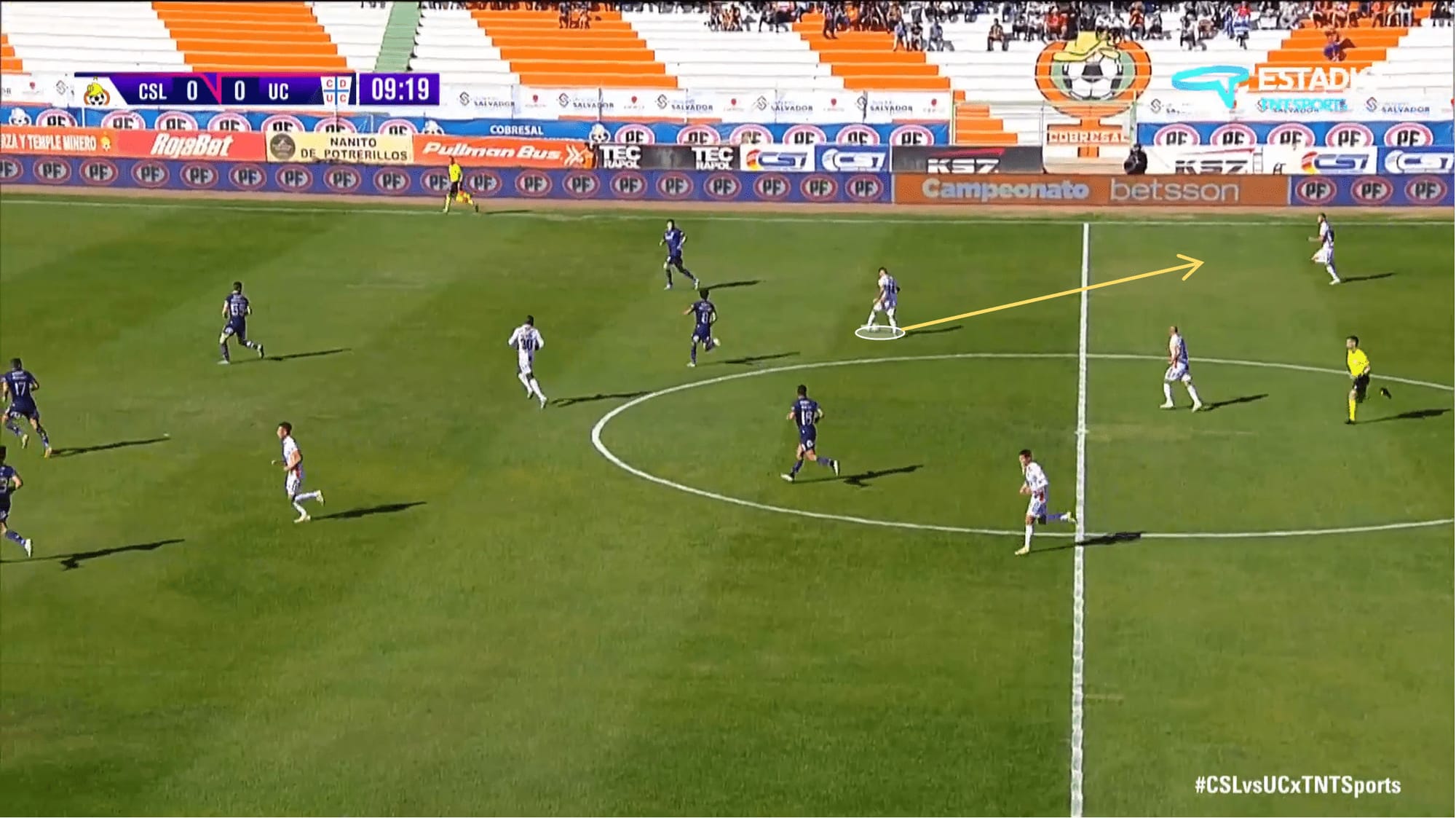
Midfielders also often provide valuable support to the wingers, which is an interesting behaviour to observe. With this positioning, they can create interesting combinations with the attackers, increasing the odds of designing a dangerous opportunity by the flank.
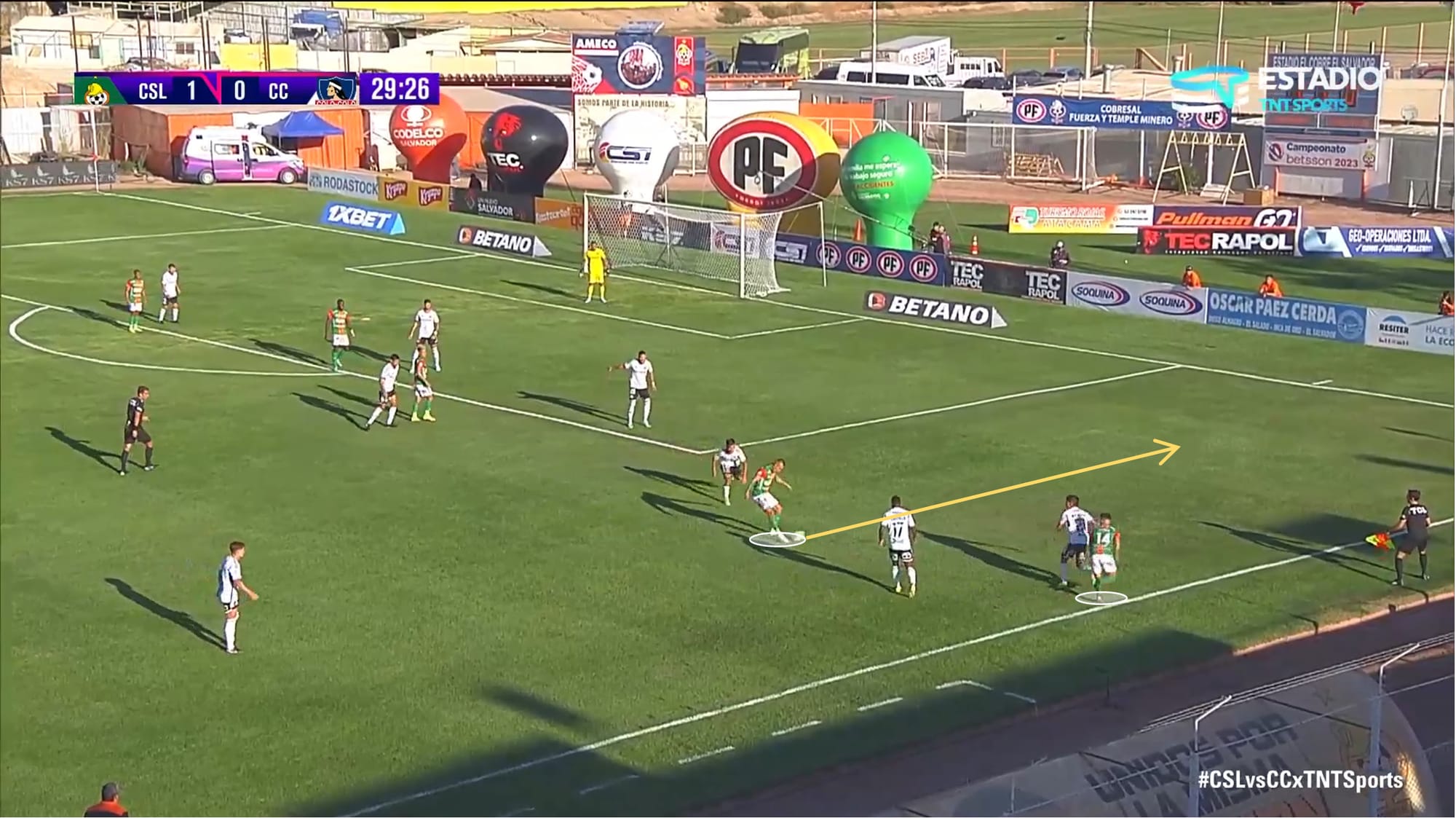
Because Camargo is usually more backtracked, the player who provides support to the left winger is normally the offensive midfielder, Valencia.
Two of the most used Cobresal’s wingers are Franco Garcia and César Munder, whose main characteristics are their great pace and agility. The team seems to take advantage of this individual feature in transitions, as we have seen previously, and in organisation, where smart through balls are played into the back of the opposition’s defensive line.
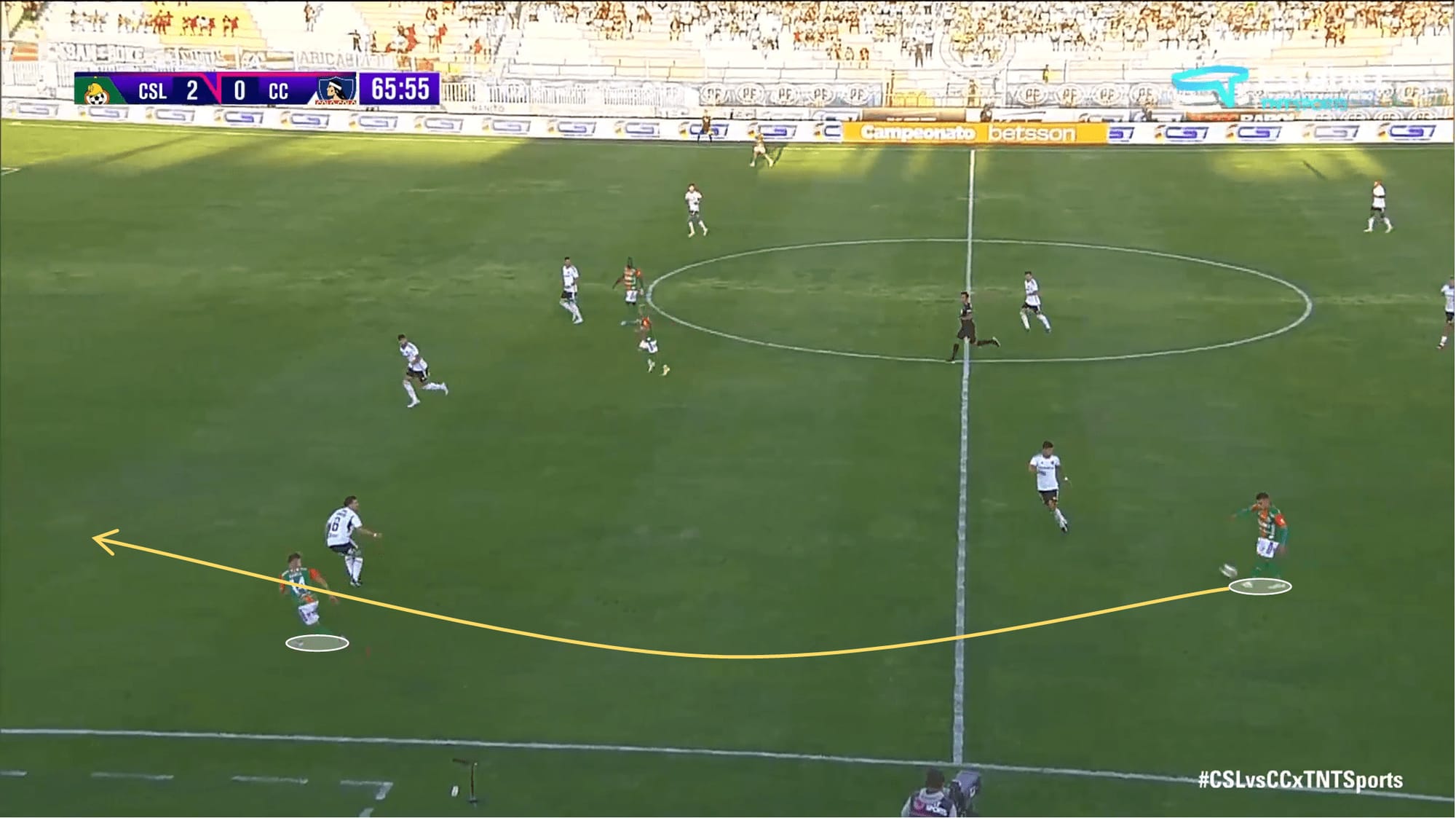
Due to the number of minutes and direct goal contributions generated, we chose Cecílio Waterman as the most influential player in Cobresal’s offensive process.
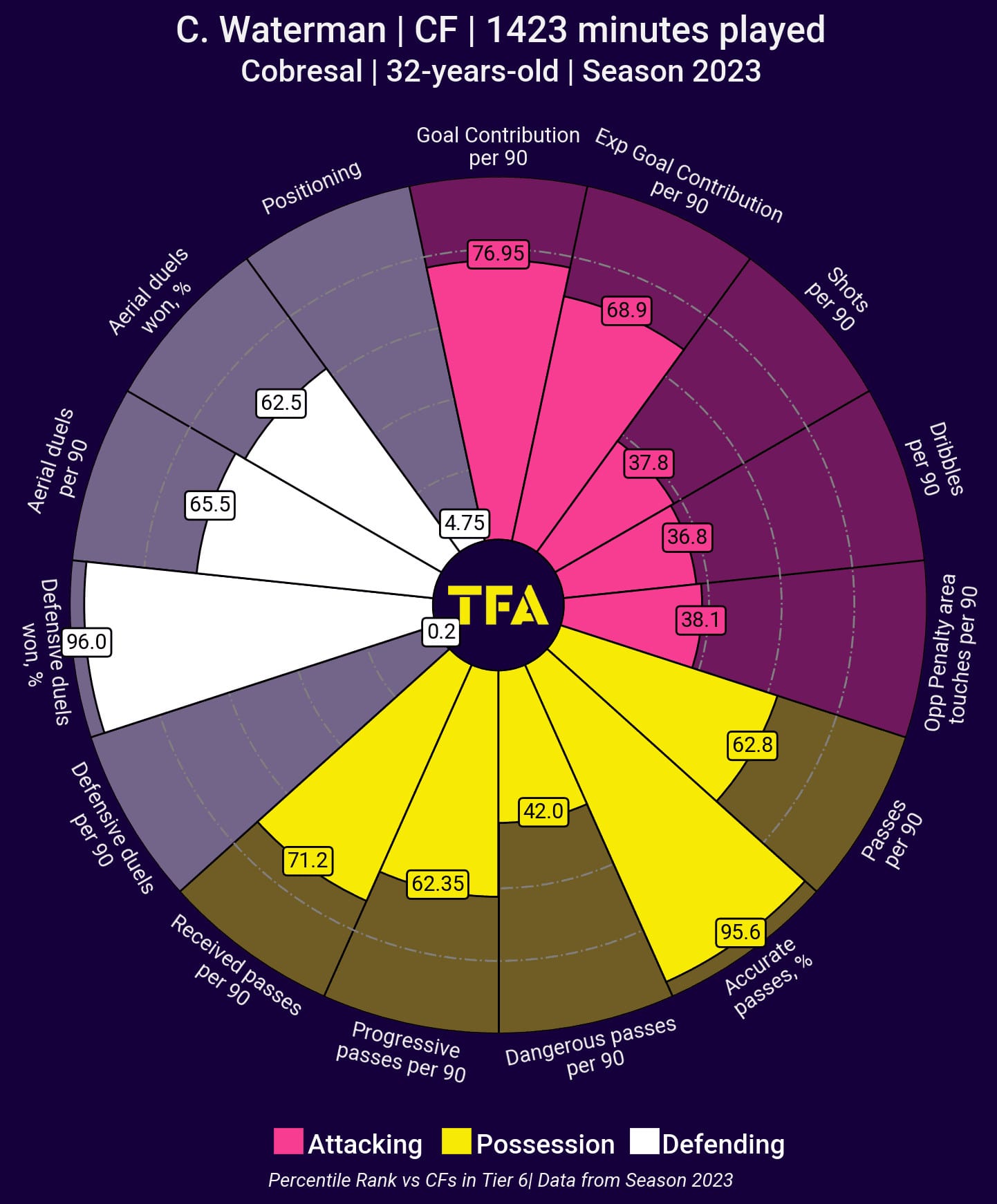
He’s a player who feels comfortable playing with his back turned to the defender, where he uses his strength and decent technical quality to pass to his colleagues. He ranked in the 95.6th percentile on pass accuracy (%), a revealing stat of such quality in the process. However, it’s important to note that most of these are low-risked passes, and as it goes, such accuracy can be misleading if not followed with such a piece of information.
He is also essential in the aerial game, which has higher relevance during a direct game or in an offensive cross situation. In addition, although defensively, he could be more present, he is a player with a high awful work rate who is constantly open space for his teammates. He ranked in the 76.95th percentile on goal contribution per 90 minutes.
Finally, he has good versatility while exploring different positions alongside the field and seems to be good timing while attacking the box.
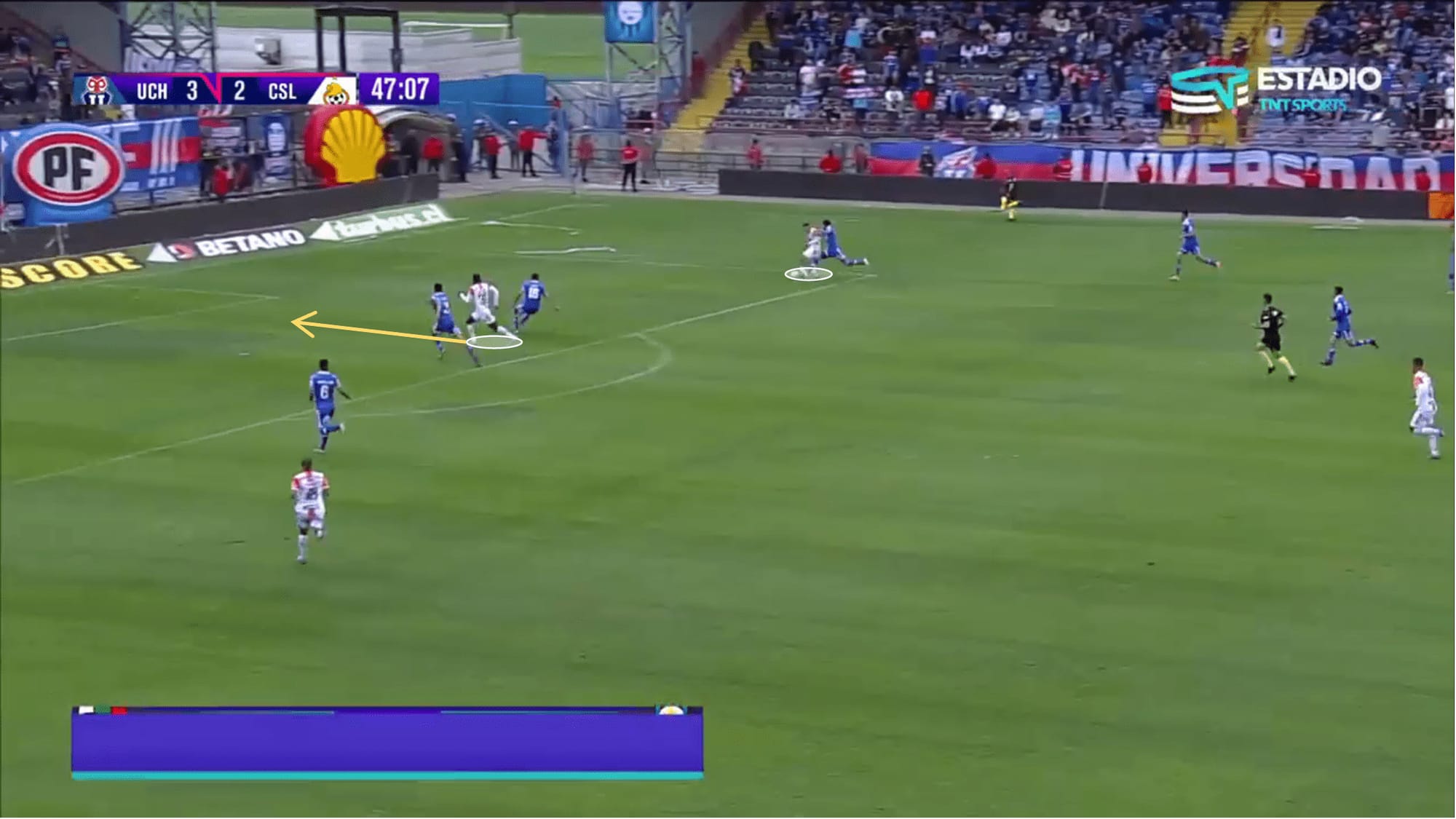
For instance, we can observe such a movement and (below) the use of his weaker foot while shooting, which isn’t the most challenging scenario but still shows his instinct while playing.
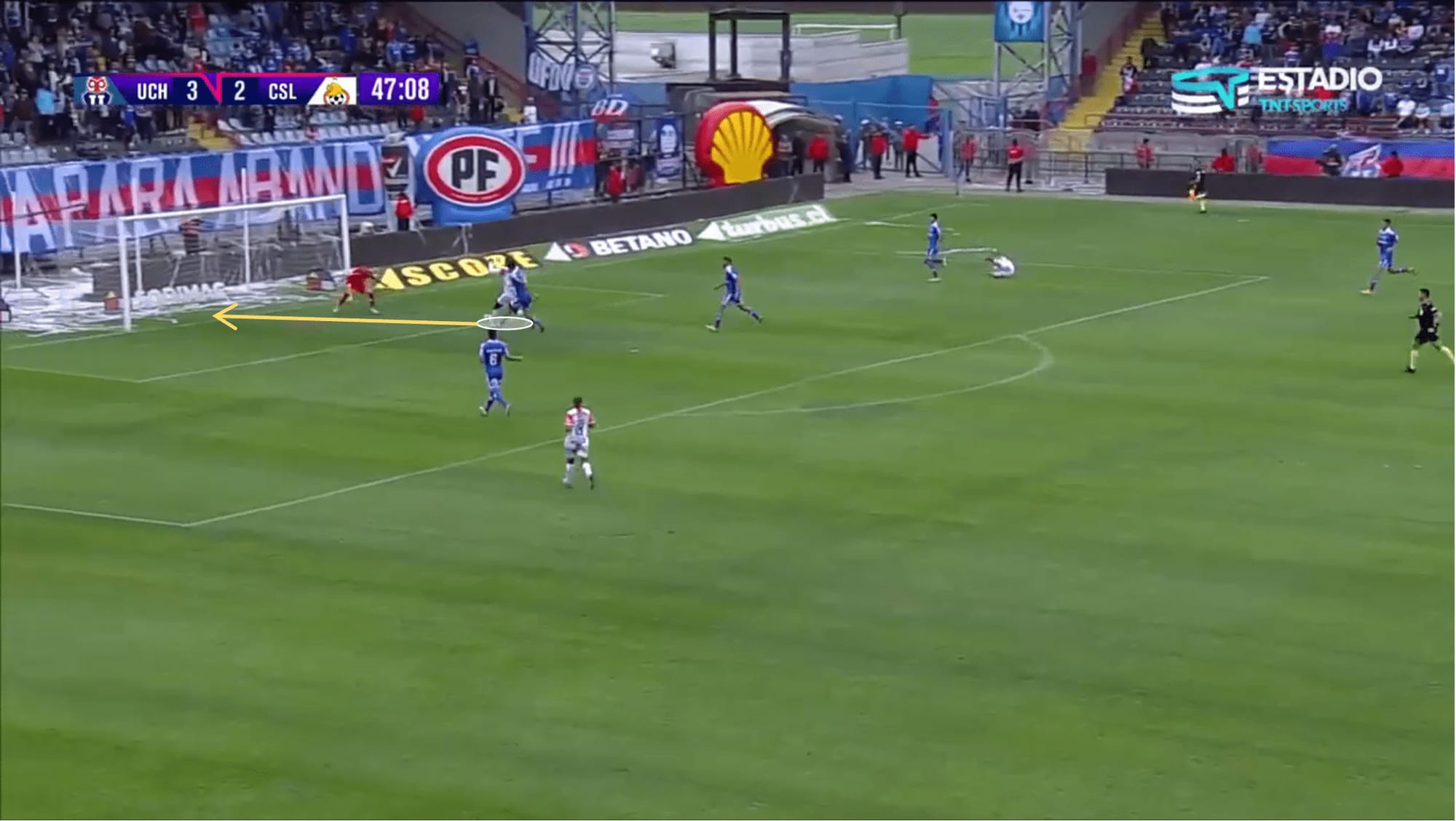
What makes Cobresal’s defence the best in the league?
As we previously mentioned, Cobresal stands as the best defence in the first professional Chilean division, and we’ll try to unveil the main reasons for such achievement.
Initially, as we said, they defend in a 4-4-2. However, this model suffers several changes during the different off-the-ball game phases.
During pressing, they opt to go with a medium-high pressing block, yet they are a particularly more intense team during the opposition’s block.
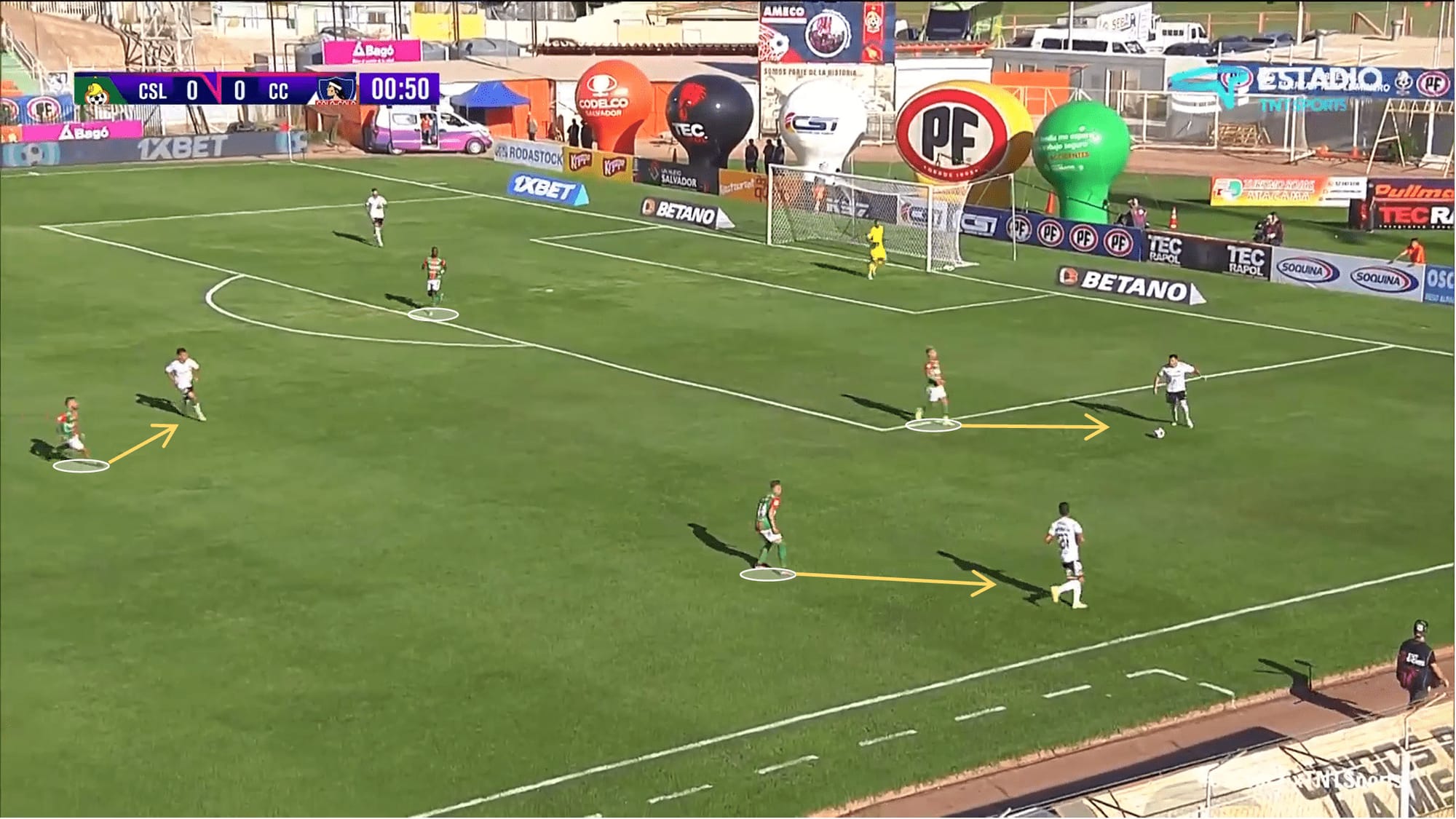
So, let’s go by parts: when the other team is set to take the goal kick, the current top team in the league presses high, and the offensive midfielder joins the centre-forward in pressing the centre-backs.
Yet, an essential part of Huerta’s pressing plan is not only to disturb the centre-backs’ build-up but, more importantly, to block the pivot as a linking element. To do so, the Waterman and Valencia are coordinated to descend and mark the pivot while the other presses the ball carrier.
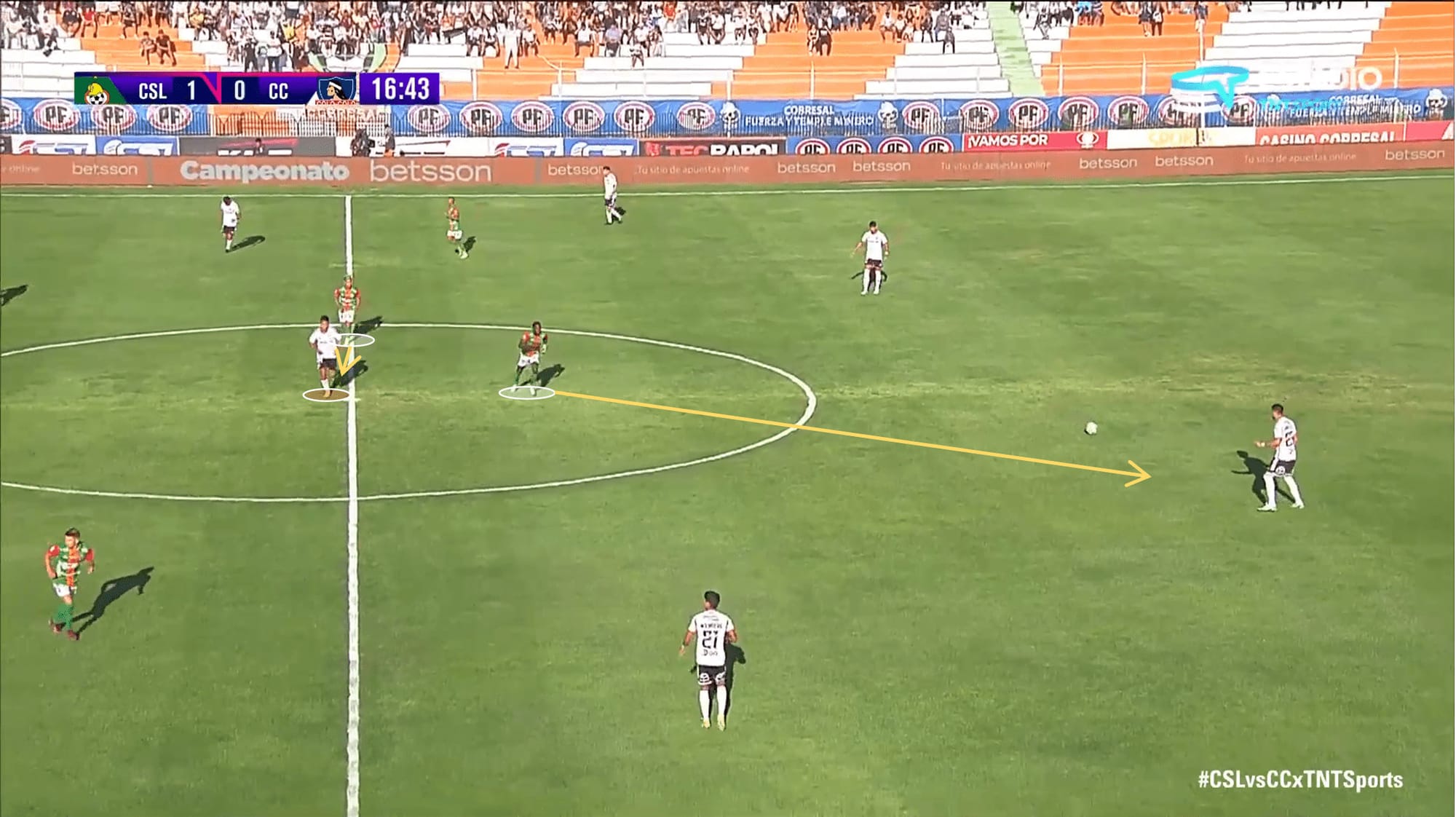
Another defensive detail that we found interesting to mention is the wingers’ positioning when the ball is on the opposite flank. In a more advanced zone of the pitch, the winger tends to close near the midfielder, possibly to reduce the midfielders’ line gaps. This will most likely increase Cobresal’s defensive solidity and, more importantly, their team’s cohesion.
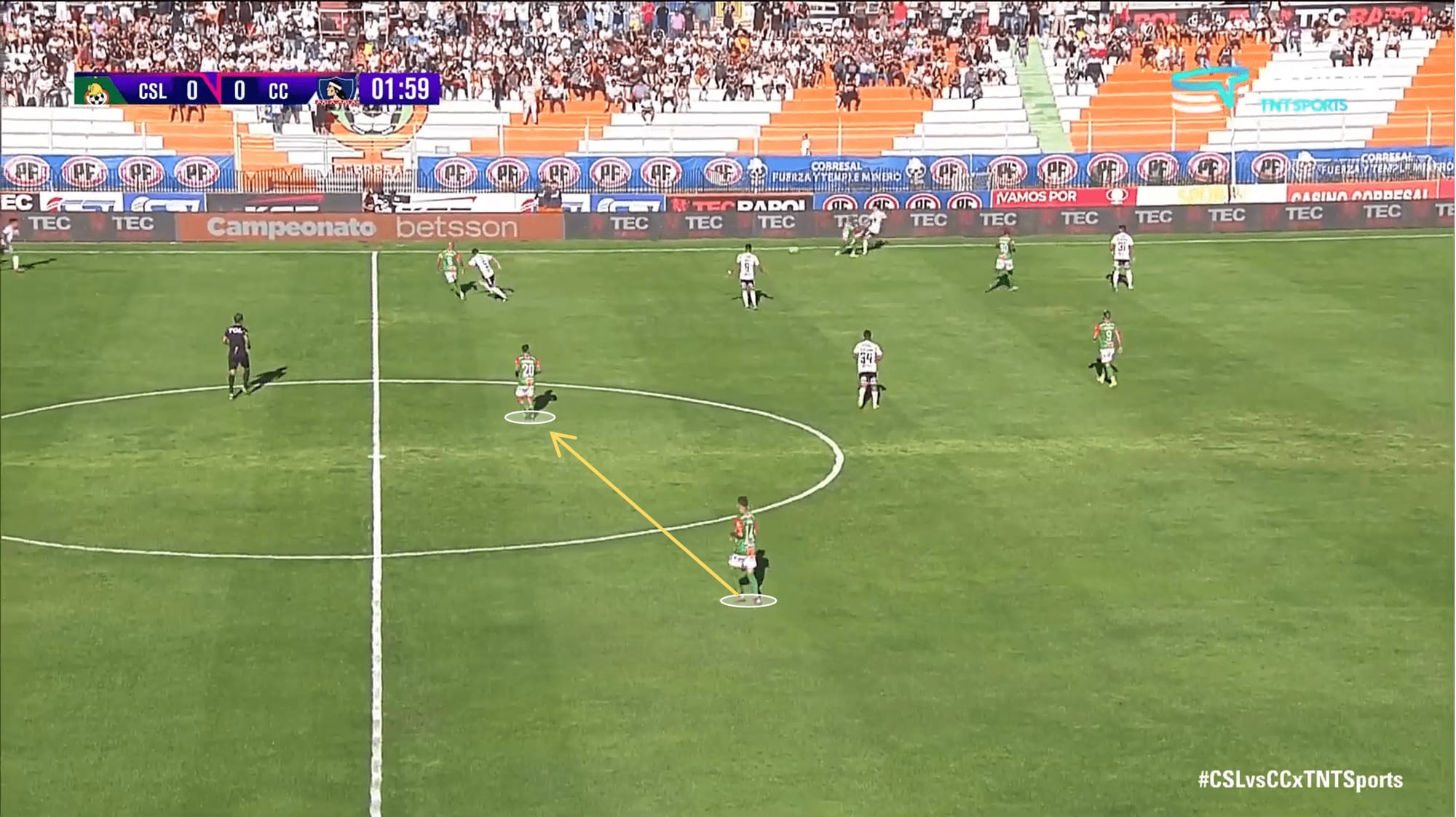
However, not everything went perfectly in their defensive approach. Just as we described before, some positional mobility can lead to the creation of some defensive misleading, and Cobresal are no different. It requires incredible tactical knowledge to understand what a specific movement from a particular player implies to the rest of the team.
In this case, ample space between the lines was created because the winger didn’t cover the pressing midfielder.
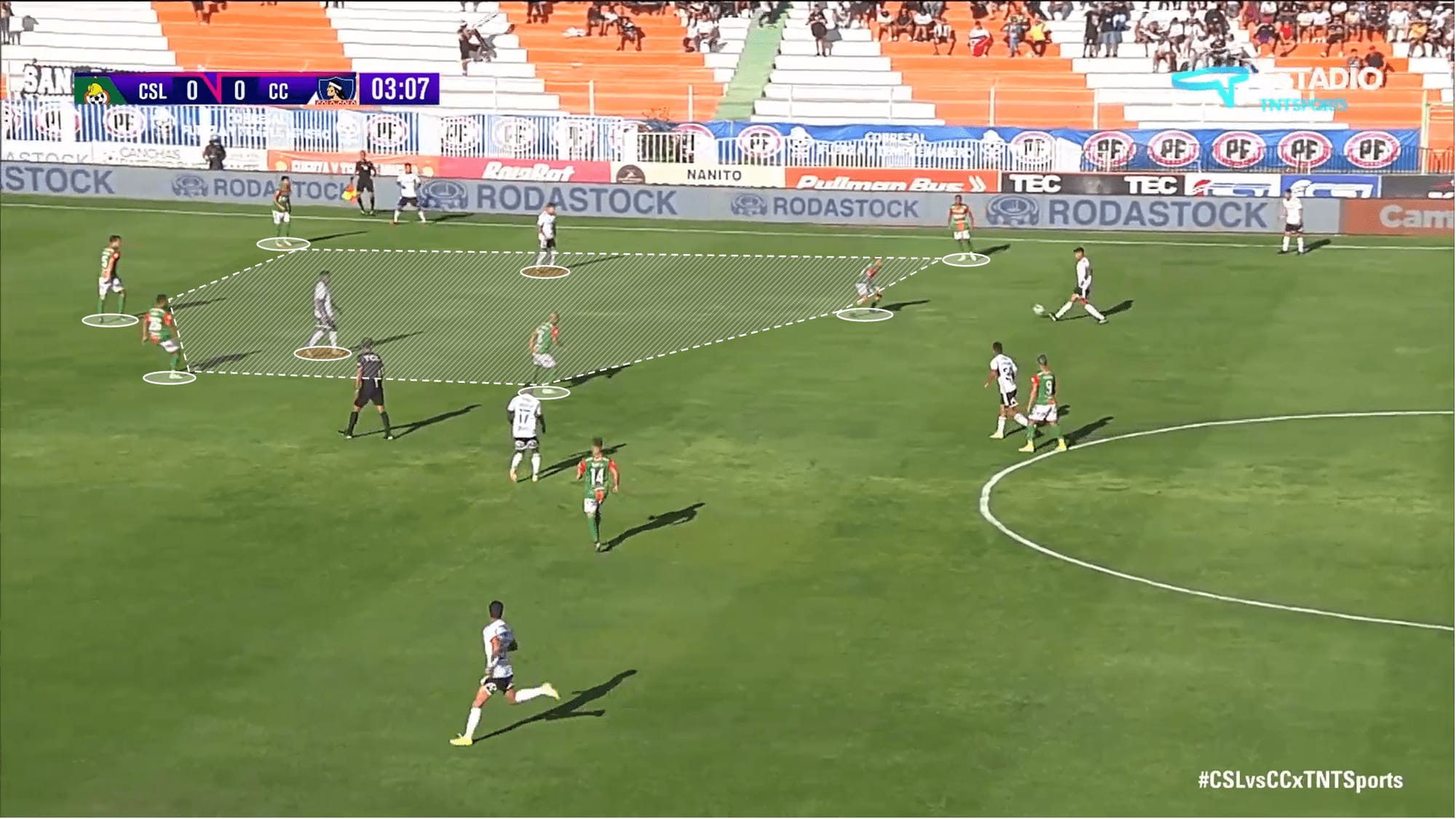
The man-marking during the game is quite usual in South American football, which leads to a game with more transitions and more spaces to play. Even though Cobresal has some interesting positioning off-the-ball details, they still follow this approach in some situations, such as the centre-back marking the centre-forward.
For instance, as the defender handling the striker stops him from progressing or turning into the goal, he is constantly ascending on the pitch. In this case, he almost reached the halfway line doing so, which can be pretty risky due to the gap he leaves behind.
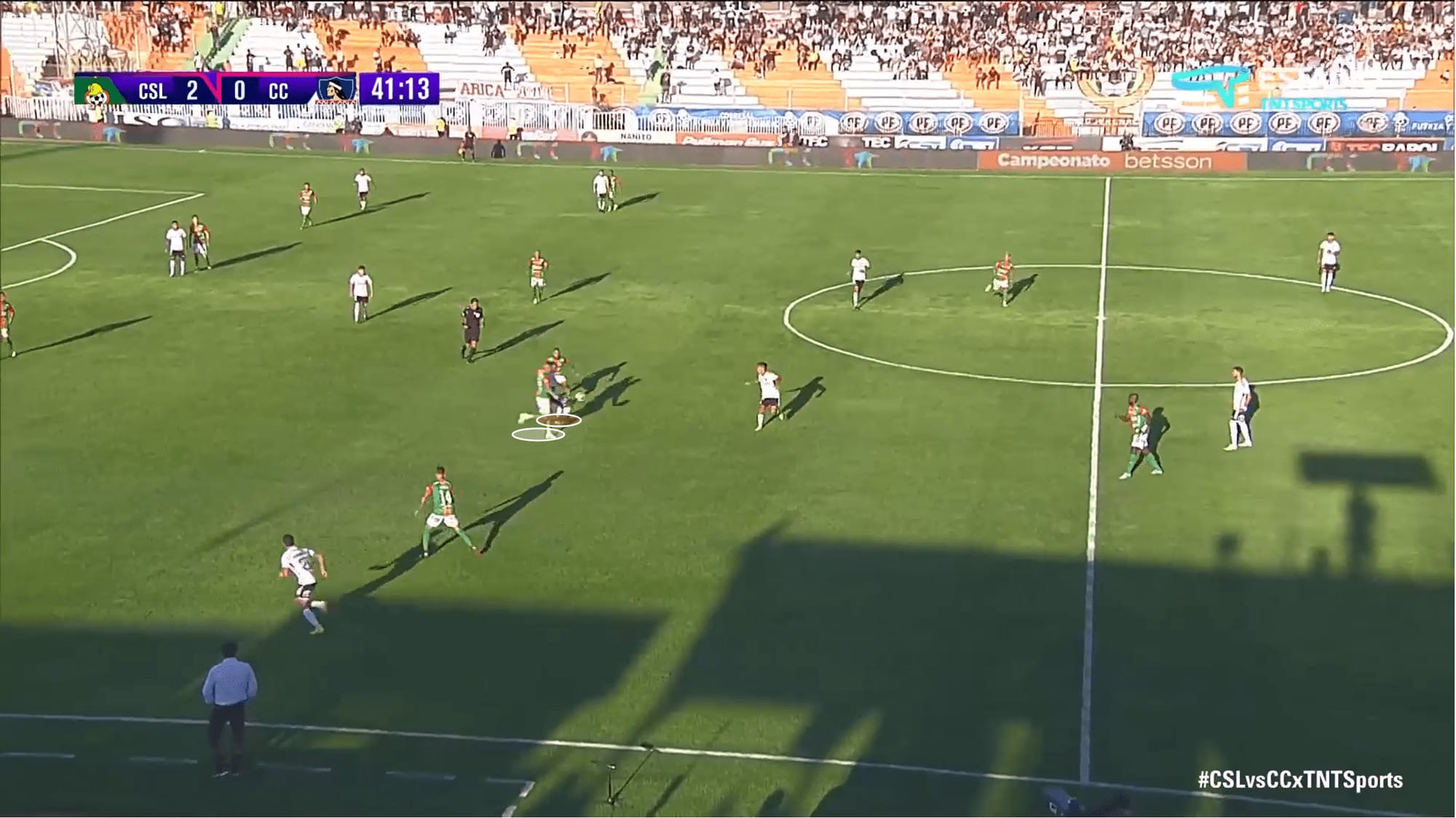
Conclusion
Gustavo Huerta is on the verge of completing a massive accomplishment in winning the Chilean league with the most undervalued squad among the other contestants.
We saw that some tactical details while attacking and counterattacks are their two main strengths as a team and that Cecílio Waterman is their primary reference in attack.
Defensively very solid, they have only conceded 19 goals and are currently the best defence in the league. We figured that some details, like the winger adjusting right next to the midfielder and the attacker closing the pivot while pressing, were essential to disturb the opposition’s on-the-ball moment.
With only nine games remaining, the league leader is only six points ahead of the second-place team, and no victory is guaranteed yet for Cobresal. With that said, it will certainly be interesting to see this final of the competition and if Cobresal can maintain this success streak.






Comments